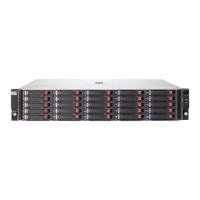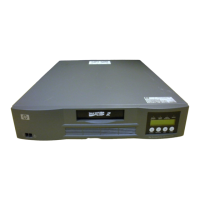Viewing job details and controlling job actions in the CLI
You can also perform the preceding job control actions from the summary view. To do so, right-click
a specific job, and then click the appropriate action on the shortcut menu.
To view data migration job details in the CLI:
1. Open a miguser session using the following command:
miguser start -p migration
2. To pause, resume, stop, restart, or delete a migration job, enter the following commands:
• To pause a running migration job, enter migration pause (see “migration pause” on page 204).
• To resume migration job operation from the state at which it was paused, enter migration
resume (see “migration resume” on page 205).
• To halt a running job, enter migration stop (see “migration stop” on page 202). Use this oper-
ation if you want to later restart the migration process without changing the configuration in-
formation associated with the job. You may also need to reschedule jobs that have been
configured in Serial Scheduled or Delayed Scheduled mode and are not yet started.
• To restart a stopped migration job from beginning, enter migration start (see “migration
start” on page 203). The data blocks transmitted before the stop operations are re-migrated.
If a job has not yet started, you can optionally change the scheduled time.
• To remove a configured job in any state from the system persistence, enter migration rm (see
“migration rm” on page 201). Generally, you would use migration rm for completed jobs as
an acknowledgement from the administrator. This frees the destination LUN for use by other
migration operations. It can also be used to clean up failed jobs that require reconfiguration.
Offline Data Migration172

